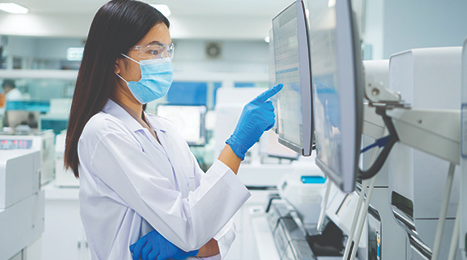Quality control, as the name suggests, is the operation technology and activities taken to meet the quality requirements. That is to say, the purpose of quality control is to eliminate the factors causing nonconformity or unsatisfactory effect in all stages of the quality ring by monitoring the quality formation process. Various quality operation technologies and activities adopted to meet quality requirements and obtain economic benefits.
In a broad sense, quality control refers to the activities of technical measures and management measures taken to make products or services meet the quality requirements. The objective of quality control is to ensure that the quality of products or services can meet the requirements.
In order to survive and develop in the fierce market competition, it is not enough for enterprises to rely on directional strategic choice. Any competition among enterprises is inseparable from the competition of “product quality”. Without excellent product quality, enterprises will eventually disappear in the wave of market economy. Product quality, as the most difficult to control and the most prone problem, often makes suppliers miserable. Small ones return goods and lose money, large ones lose customers and close their doors. Therefore, how to effectively carry out process control is the core of ensuring product quality and improving product quality, promoting enterprise development, winning the market and making profits.

Purpose Of Quality Control
Therefore, the purpose of quality control is to predict whether the product is qualified (or the severity of internal defects), so that enterprises can firmly control their “product quality”, improve product quality, and improve product qualification rate and finished product rate. Its advantages are:
- Avoid unqualified materials entering the next production stage.
- Avoid recall of nonconforming products after they enter the market.
- Improve quality and efficiency of quality inspection.
Let’s intuitively feel the necessity of implementing quality control through the following examples:
Example 1: An aluminum product manufacturer
The generation of a product needs to go through three processes a, B and C. after going through process a, the semi-finished products have internal defects, which are directly detected, and then reworked or discarded as appropriate. Avoid continuing process B and C to achieve the purpose of cost-saving.
Example 2: An automobile production line
Due to the complexity of the production process, the manual detection cost of each process is high. Use the production data to directly predict the product quality, and then recheck a small part of the poor quality manually, so as to improve the quality inspection efficiency and reduce the labor cost.
Example 3: A cloth generation enterprise
For removing cloth defects, the manual detection efficiency is low, and the visual acuity of the inspectors is greatly damaged. The type and location of defects can be directly detected by using image acquisition equipment such as camera and computer vision.
Quality Control Implementation Method
Since quality control is so important, how should enterprises achieve effective quality control? Huidu big data team uses sensor and computer vision technology to help enterprises successfully achieve quality control.
Sensor
- Collect data: Provided by customers or collected online.
- Data analysis and cleaning: Deal with missing, abnormal and invalid data through analysis.
- Model building: The model is established by observing the data.
- Analysis results: If the prediction accuracy meets the requirements, the reasons. Can accuracy be improved.
Computer vision
- Collect data: Prepare tagged workout pictures.
- Model building: Through the purpose analysis, the model is established.
- Result analysis: If the prediction accuracy meets the requirements, the reasons, can accuracy be improved.